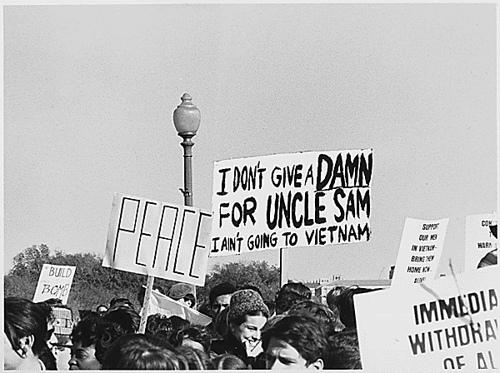Vietnam and Counter-Culture Revolution of the 1960s
The United States initially adopted the policy of non-interference to international affairs, hence concentrating on internal development. The status quo aimed at internal advancement that incorporated alleviated industrialization and domination of foreign markets[1]. The manufactured goods and weapons from U.S. industries were on-demand since the country adopted allied relations with other nations, including those engaged in the world wars (Tribe, 1960). However, the U.S. vowed never to side with any nation unless the borders of member countries of the Federal U.S. were directly affected by the nations involved in the war[2]. The peaceful co-existence enhanced a peaceful business environment with all blocks formed in the initial stages of W.W.
In 1954, the U.S. joined the Vietnamese war, which significantly affected North Vietnam, South Vietnam and the U.S. The war resulted in the death of 58 000 Americans; most of the affected people were killed in the course of the Vietnam War[3]. The opposition of the war exhibited division from the U.S. citizens. Explicitly after Richard Nixon ordered that U.S. forces be withdrawn from Vietnam, the conclusion was greatly opposed since most American citizens had died during the war accompanied by the Vietnamese who died in the course of the war[4]. The counter culture of the 1960s greatly impacted the U.S. and Vietnam War. The Hippies opposed the war together with commercialism and societal norms.
In 1961 president John Kennedy alleviated U.S. support that assisted the South Vietnamese government; the coming together involved increasing the U.S. militias and authorizing several strategies that helped curb the negative impacts of the war[5]. It was argued that the collapse of communism would affect another nation, and therefore the U.S. advocated for capitalism to curb the spread of communism policies. In 1964, Lyndon Johnson pressed Congress to adopt immediate steps that called for the gratification of American grievances to curb the massive killing of American militants[6]. The communist ideologies contradicted the objectives of the capitalists who advocated for free-market democracy. However, the conflicts between the two superpowers never involved confrontation. The unclear fights and conflicting ideologies called for the allies’ involvement, who sided with diverse blocks.
The impacts of the cold war were experienced when the communists actively aimed at taking over South Vietnam; the U.S. strongly embarked on adopting strategies that would hinder the progressive steps by the communists, these involved bombing Vietnam forces. The Vietnam War culminated in a period that saw nations “coming apart” among the communist and capitalists who advocated for personal wealth accumulation[7]. In contrast, communists believed in combined efforts by members of society to garner resources. Therefore the two blocs that emerged in the course of the cold war involved communists and capitalists. U.S. advocated for the foreign policy that hindered the spread of communism and the impacts of the U.S.S.R. in the world, especially on developing nations.
The main protagonists in the cold war regime were the United States and the Soviet Union; therefore, the impacts of the war were known to last for more than 45 years. The two nations differed over main ideological differences; these comprised the capitalists and communists. U.S. supported nations that embraced containment policy on the spread of communism[8]. The superpowers gave aid to countries that advocated for economic policies by offering aids, troops and weapons, which greatly evidenced in Vietnam and Korean wars. The containment policy was successful, kept the superpowers aware of the strategies that necessitated the development and inculcated a sense of victory since the actual war was not evidenced. The great offensive that was staged by North Vietnamese forces affected Central Highlands[9].







